You want a dwarf plant that’s small, easy, and full of flowers? The best bonsai flower plants for beginners are just what you need. For a beginner interested in flowering bonsai, Ficus and Azalea are good starting points due to their resilience and ease of care.
Ficus bonsai, especially, are known for being forgiving of beginner mistakes, such as inconsistent watering. Azaleas offer beautiful flowers but may require a bit more attention to maintain optimal humidity and light conditions.
For beginner bonsai lovers interested in indoor flowering bonsai, such as Ficus bonsai (Ficus Ginseng) or Carmona, also known as Fukien Tea, it is a great choice due to its relative ease of care. Azalea and Bougainvillea are also popular flowering outdoor bonsai options, but require more specific care.
These are tiny trees, but they bloom like full-sized ones. You can pick from colorful types like Azalea, Bougainvillea, Jasmine, Wisteria, and even Cherry Blossom. Some smell sweet, like Serissa and Jasmine, while others produce small fruits, such as the Pomegranate bonsai. You don’t need a big garden.
These plants thrive in shallow bonsai pots and can be displayed on your table, shelf, or balcony. With just a little sunlight, water, and care, they bloom again and again. Want one for your home, or maybe a gift?
So, choose the best bonsai flower plants for beginners, learn how to care, and see where to keep the best tiny tree for beginner bonsai lovers easier than you think.
What are the Best Bonsai Flower Plants For Beginners? How Do You Keep Your Bonsai Flowering Year After Year?
A bonsai flower plant is a small version of a real tree that grows flowers. It’s not fake. It’s a living, breathing tree that you train to stay tiny but still bloom!
These plants grow in shallow bonsai pots and need regular pruning to keep their shape. They are made from flowering tree species that are perfect for mini gardens.
So, what makes them different from normal potted plants?
- Regular plants just grow freely.
- But a bonsai is shaped and styled according to the tradition of living art.
- A flowering bonsai gives you both flowers and design in one plant.
Real Examples of the Best Bonsai Flower Plants for Beginners friendly:
Let’s look at how each of these becomes a bonsai with flowers:
- Azalea (Rhododendron indicum): Grows bright pink or white flowers. Common in Japanese bonsai culture, and easy for beginners.
- Bougainvillea: Known for colorful bracts (pink, red, purple). Tropical beauty that can bloom all year in warm places.
- Wisteria: Produces long, hanging purple flowers. Looks like a waterfall of petals in spring.
- Cherry Blossom (Sakura): The symbol of spring in Japan. Soft pink flowers bloom once a year totally magical.
- Jasmine: This one adds a sweet smell! Small white flowers and gentle vines make it a joy to care for.
- Serissa (Snow Rose): Called “Tree of a Thousand Stars” because of its many tiny white flowers. Loved for both look and smell.
- Pomegranate: Grows red-orange flowers and even tiny edible fruits. In many cultures, it’s a sign of fertility and good luck.
- Hibiscus: Big flowers in red, orange, or yellow. Needs warmth, but very showy when in bloom.
- Camellia: Looks like roses! Blooms in winter with soft pink or red petals. Needs a cool, shady spot.
Each of these is trained as a bonsai, but still keeps its flowering beauty. That’s the magic of bonsai horticulture is tiny plants, you control the size but never lose the bloom.

Best Bonsai Flower Plants for Beginners
You don’t have to be a garden expert to grow a flowering bonsai. Some plants are easy, strong, and bloom with little effort. Below is a guide to the best beginner-friendly bonsai flower plants.
| Bonsai Plant | Flower Color | Bloom Time | Care Level | Special Traits |
| Azalea (Rhododendron indicum) | Pink, White, Red | Spring | Easy | Bright blooms, great for shaping |
| Bougainvillea | Pink, Purple, Red, White | Spring to Fall | Easy (warm areas) | Vibrant bracts, long blooming |
| Cherry Blossom (Sakura) | Light Pink, White | Early Spring | Medium | Symbol of renewal and peace |
| Jasmine | White | Summer | Easy | Sweet smell, calming effect |
| Wisteria | Purple, White | Late Spring | Advanced | Hanging petals, a romantic look |
| Serissa (Tree of a Thousand Stars) | White | Year-Round (indoors) | Medium | Tiny flowers, fragrant leaves |
| Pomegranate | Red-Orange | Summer | Medium | Flower + fruit combo |
| Hibiscus | Red, Orange, Yellow | Late Spring to Fall | Medium (needs sun) | Tropical feel, big flowers |
| Camellia | Pink, Red, White | Late Winter | Medium to High | Blooms in cold, rose-like petals |
12 Top Popular Bonsai Flower Plant Beginner Guide: Types, Care, and Placement.
Flowering bonsai trees add a vibrant touch to the art of bonsai. Several species are well-suited for bonsai cultivation, offering beautiful blossoms alongside the traditional aesthetic.
Azaleas, bougainvillea, and wisteria are popular choices known for their profuse blooms, while other options like the Satsuki azalea, Gardenia, and Japanese maple also provide attractive flowers. Here’s the best 12 top and best bonsai flower plants for beginners, and a detailed look at some excellent flowering tiny tree options:
1. Ficus (Ficus Ginseng): Easy Bonsai Flower Plants Beginners’ First Choice.
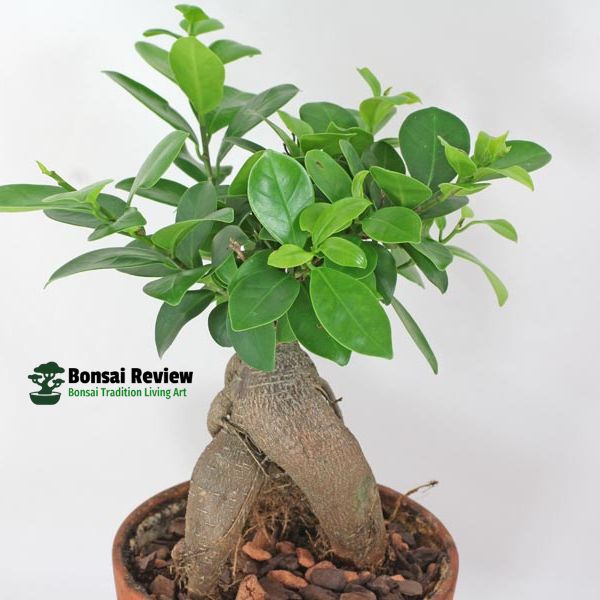
Ficus microcarpa, also known as Chinese banyan, Hill’s weeping fig, small-fruited fig, Malayan banyan, Indian laurel, or curtain fig, is a species of banyan tree in the family Moraceae. The Ficus Bonsai Ginseng tree requires a warm climate and a humid atmosphere.
It is called so due to the trunk’s resemblance to Ginseng roots. This lovely variety of Ficus is also extremely easy to maintain as long as they are provided with good filtered light and airflow, but avoid placing them in a cool draught or direct sunlight.
These are very forgiving of beginner mistakes, like infrequent watering, and can thrive indoors with indirect light. Ficus can be trained to have impressive aerial roots.
2. Carmona (Fukien Tea): Indoor Bonsai Flower Plant, Beginner-Friendly.
Another good option for beginners, Carmona bonsai trees, also known as Fukien Tea trees, are known for their beautiful, small white flowers that bloom during the warmer months.
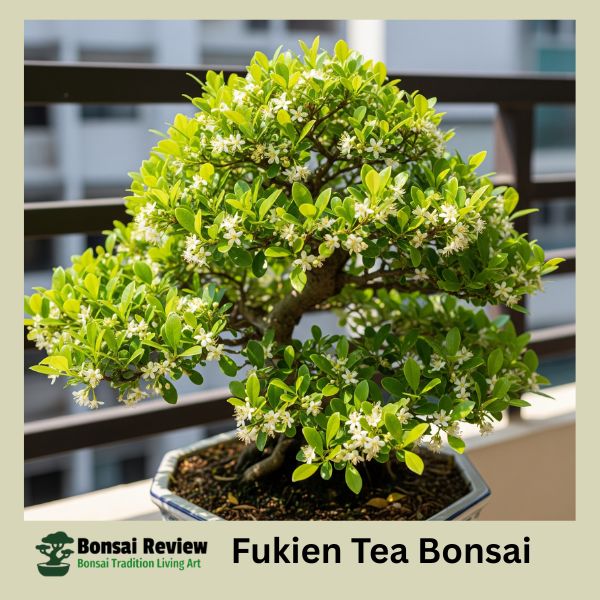
These flowers, along with their glossy green leaves and textured bark, make them a popular choice for indoor bonsai lovers.
The Carmona is known for its small white flowers and glossy green leaves. The Fukien Tea is traditionally an indoor Bonsai, but it can be kept outside in very warm climates. Also a relatively low-maintenance choice for indoor bonsai. It requires a lot of natural light, so it should be placed outside or balcony.
Pruning your Carmona is relatively easy and can be quite fun! The Fukien Tea tree handles pruning extremely well. The young shoots that will come through are flexible, which makes trimming them a lot easier.
3. Azalea Bonsai: Easy Colorful Bonsai Flower Plants for Beginners.
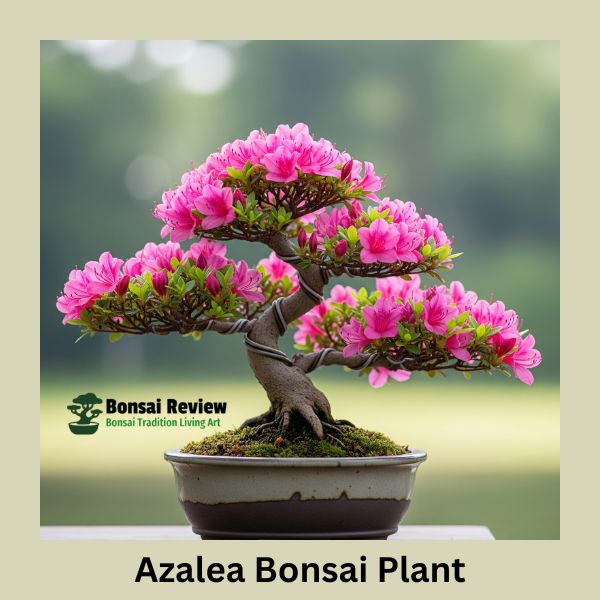
Azaleas are a classic choice for flowering bonsai, with varieties like the Satsuki azalea known for their abundant and colorful blooms. The common azalea is generally easy to grow as a bonsai. The key piece of knowledge is to use the right soil free-draining and easy for fine roots to grow in. It can produce a wide range of flowers from mid-March to June, but the species is dependent.
Generally considered more challenging than Ficus or Carmona, Azaleas offer beautiful, vibrant flowers (pink, red, or purple) and can be a rewarding choice for dedicated beginners.
4. Bougainvillea Flower: Easy Indoor and Outdoor Bonsai Flower Plants for Beginners.

Bougainvillea, known for its vibrant, papery bracts, is a popular flowering vine native to South America.
These bracts, which are actually modified leaves, come in a variety of colors like magenta, purple, red, orange, yellow, and white, surrounding the tiny, inconspicuous flowers, adding a dramatic flair to bonsai.
They are a common sight in warm climates, adding a splash of color to gardens, locations, and even containers. It’s widely cultivated as an ornamental plant in warm climates, where it can flower almost year-round.
In warmer climates, bougainvillea can flower almost continuously. In cooler climates, they may flower less or become deciduous and appear in a variety of colors. Bougainvillea can be a stunning flowering bonsai.
5. Wisteria Dwarf Plant: Why is wisteria so special?
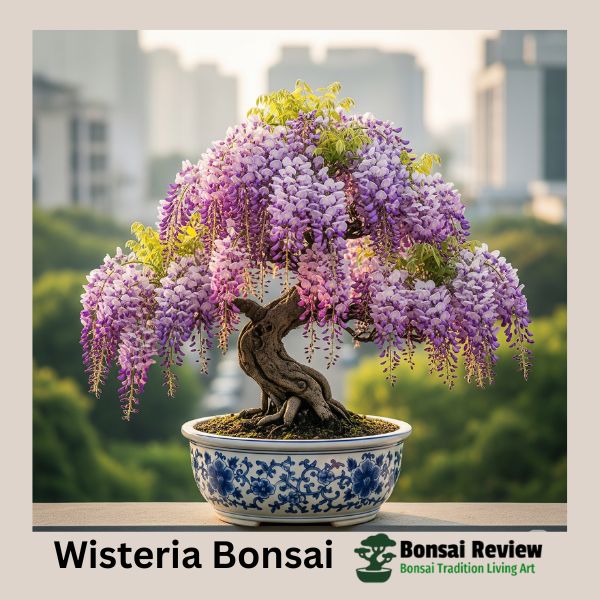
The Wisteria (Floribunda & Macrostachya) best outdoor plant, thrives in bright, natural light and requires at least six hours of direct sunlight per day.
Wisteria sinensis ‘Prolific’ sweetly scented cultivar, is the original W. sinensis introduced from China, and one of the best for growing on a wall. Its soft blue-violet racemes (16-22cm) contain around 50 to 80 flowers.
Wisteria is a genus of flowering vines known for its cascading clusters of fragrant, pea-like flowers. The most common colors are shades of purple, blue, and white, though pink varieties also exist.
Wisteria is native to Asia and North America and is a popular ornamental plant. Offers beautiful cascading flowers but requires specific care and pruning techniques. Throughout Japanese history, wisteria flowers were often recognized as a symbol of nobility due to their purple hues.
Historically, members of Japanese society were designated a certain color depending on their class, with purple being the highest rank and grey being the lowest.
6. Gardenia: What Does the Gardenia Flower Symbolize?
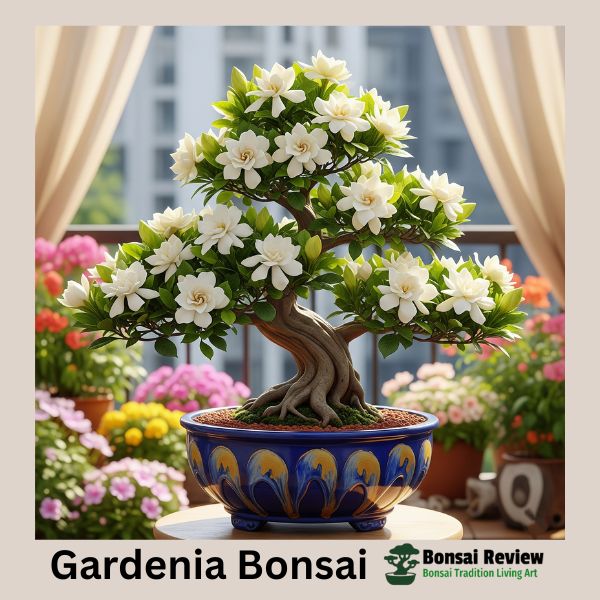
Gardenia is a genus of flowering plants in the coffee family, Rubiaceae, native to the tropical and subtropical regions of Africa, Asia, Madagascar, the Pacific Islands, and Australia.
Its shiny green leaves and heavily fragrant white summer flowers, widely used in gardens in tropical, subtropical, and warm temperate climates.
The iconic gardenia flowers symbolize purity, admiration, secret love, and innocence. Gardenias are given to convey, “you’re lovely”. The bright white petals speak of love and purity, hope, clarity, alignment, self-reflection, dreams, intuition, and renewal. They speak of optimism and belief.
Gardenia leaves are shiny and waxy, symbolic of clarity and reflection. Gardenias offer beautiful, fragrant white flowers, adding a touch of elegance to any bonsai collection.
7. Japanese Maple: Is it a Wood Plant, Fruits, or Flowers Delegated?
While known for their colorful foliage, Japanese maples also produce small, delicate flowers, adding another layer of interest.
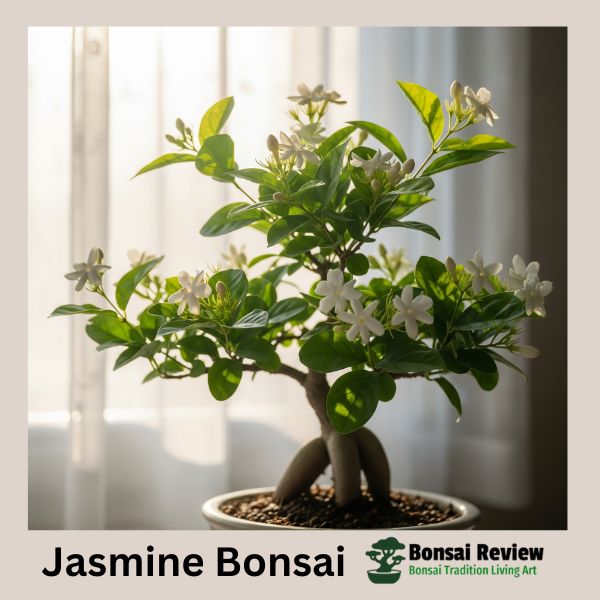
Japanese maple trees (Acer palmatum) do produce flowers, though they are small and often overlooked, being less showy than the tree’s foliage. The flowers typically appear in spring and are often greenish, making them blend in with the new leaves. Some cultivars have reddish flowers, which are more noticeable. It is native to Japan, Korea, and China.
General plant form is rounded to broad-rounded, often with low branching. Each palmate green leaf (2-5″ long) has 5 or 7, but less frequently 9, pointed, toothed lobes. Small reddish-purple flowers in umbels bloom in mid-spring (April).
8. Fuchsia: What do fuchsia flowers symbolize?

Fuchsias are known for their pendulous, bell-shaped flowers in various colors. Fuchsia is a genus of flowering plants that consists mostly of shrubs or small trees.
In many cultures, fuchsia is a symbol of grace and elegance. It is also believed to represent confiding love, amiability, and good taste. The vibrant and bold colors of fuchsia flowers also symbolize creativity, confidence, and celebration.
Almost 110 species of Fuchsia are recognized; the vast majority are native to South America, but a few occur north through Central America to Mexico, and also several from New Zealand to Tahiti.
What is so great about hardy fuchsias is that, unlike most perennials that only bloom for 5 to 6 weeks, once fuchsias start blooming, they will continue until frost in late October; they are a blooming machine!
9. Camellia: What is special about camellia flowers?
The dwarf plant Camellias produce beautiful, showy flowers in shades of pink, red, and white. Camellia is a genus of flowering plants in the family Theaceae. They are found in tropical and subtropical areas in eastern and southern Asia, from the Himalayas east to Japan and Indonesia.
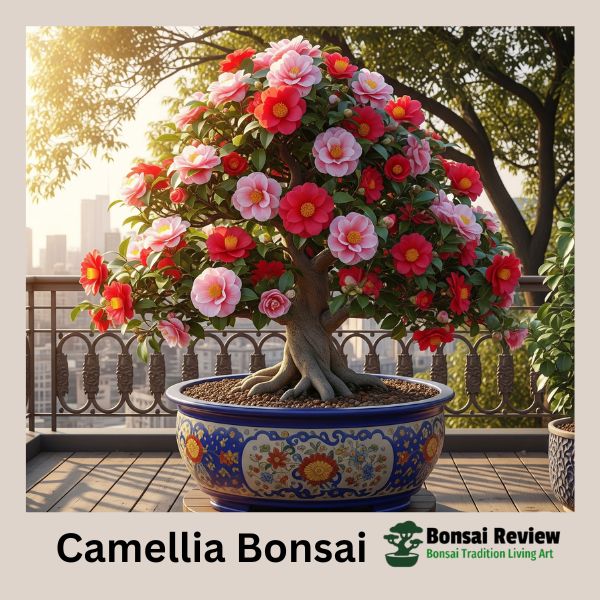
There are more than 220 described species; almost all are found in southern China and Indochina.
Camellias are evergreen shrubs with beautiful flowers, normally in late winter and early spring.
For the first two years, they require some attention, particularly watering, to become established.
Camellias have long bloom seasons and actively bloom during fall and winter, times that are the off-season for many other plants.
Camellias are very long-lived, with some living up to 100 years and growing 25 feet long. Camellias can bloom in late fall, winter, or early spring, depending on the cultivar. Sasanqua camellias bloom on the earlier side from late fall. While deer deem camellias as their least appealing options on the menu, pollinators love them.
10. Crabapple: What do crabapple blossoms symbolize?
Crabapple trees offer small, fragrant white or pink flowers followed by attractive fruit. A symbol of fertility and a forager’s delight.

Malus floribunda, commonly known as Japanese flowering crabapple, Japanese crab, purple chokeberry, or showy crabapple, originates from Japan and East Asia. Crab apple trees are associated with love and marriage, and their small, hard fruits make an exquisite, jewel-coloured jelly.
Crab apple bark is greyish brown and flecked, and the blossom is sweetly scented. Crabapple trees are beloved for their springtime flowers. Bursting forth in pops of pink, white, or red, these blooms can last for up to two weeks.
11. Flowering Quince: Is it Tough and Hard to Plantation?
Flowering Quince, Chaenomeles speciosa Rosaceae (Rose Family), mature shrubs flowering in spring, mature shrubs flowering in spring, flowers, twigs showing. All quince species have flowers.
Gardeners in the West often refer to these species as “flowering quince” since Chaenomeles are grown ornamentally for their flowers, not for their fruits.

These plants have also been called “Japanese quince“, and the name “japonica” refers to C. Flowering quince typically blooms in late winter or early spring, often before the leaves emerge, with vibrant red, pink, or white flowers.
In warmer regions, they may bloom as early as late January, while in colder areas, they might not appear until March. The flowering period is relatively short, lasting about one to three weeks. Flowering quince trees produce vibrant red, pink, or white flowers in early spring.
Flowering quince will grow in USDA hardiness zones 4-9 in a wide range of soils, though it does best in slightly acidic, loamy soil. It needs full sun for best flower production, but it will also grow in partial shade.
Flowering quince is a tough, hardy plant that would make a great informal hedge. It is moderately salt-tolerant, and in comparison.
12. Cherry Blossom: Are there cherry blossoms in the USA?

Cherry blossoms, especially the Japanese varieties, are iconic for their delicate pink or white flowers. Peak bloom is when 70% of the iconic cherry blossoms open on the Yoshino cherry trees around the Tidal Basin in Washington, DC.
The full blooming period lasts from several days to up to two weeks, depending on weather conditions.
It’s difficult to predict exactly when peak blooms will occur, but most areas will see them starting in mid-late March or early April.
Cherry blossoms can appear as early as February in some places, such as Los Angeles, or as late as May in Traverse City, depending on the weather.
Why Choose a Flowering Bonsai Plant?
You might be wondering, “Why should I pick a bonsai with flowers?” The answer is simple: Best Bonsai Flower Plants For Beginners give you both beauty and peace in a tiny space. They are not just little trees; they bloom with color and joy. It’s like having a full-flowering garden on your desk.
When you choose a flowering bonsai, you’re picking a decorative, living artwork. These plants bring nature indoors and make any spot feel calm and special. If you keep one near your window or give one as a gift, it creates a moment of wonder. Many people love flowering bonsai trees because:
- Offer those seasonal blooms like spring cherry blossoms or summer azaleas.
- They are perfect for urban living, small spaces, or apartment gardening
- They connect to traditions like Zen gardening, feng shui, and Japanese aesthetics
- Some, like Jasmine bonsai, give off a natural fragrance
- Others, like the Pomegranate bonsai, bring symbolic meaning, like love and abundance
- They make meaningful gifts that live on, much more personal than flowers in a vase.
Flowering bonsai is more than a plant. It’s a blend of bonsai art, botany, mindfulness, and even home styling. You’ll get beauty, peace, and a blooming surprise each year.

How to Care for a Bonsai Flower Plant for Beginners?
You don’t need a green thumb to keep a bonsai flower plant happy. Just follow a few simple steps, and your tiny tree will reward you with beautiful blooms again and again. Each plant is small, but it still needs the right balance of light, water, and attention.
1. Sunlight
- Give your flowering bonsai at least 4 to 6 hours of direct or bright indirect light daily.
- Place it near a south-facing window or in a spot that gets gentle morning sun.
- Outdoor types like Bougainvillea, Hibiscus, and Pomegranate love warm sun.
- Cooler-climate bonsai like Camellia or Cherry Blossom (Sakura) prefer filtered light.
2. Watering
- Keep the soil slightly moist, not dry and not soggy.
- Check the top of the bonsai soil every day. If it feels dry, it’s time to water.
- Use a gentle pour or misting spray for sensitive species like Serissa and Jasmine.
- Avoid letting water pool at the bottom of the bonsai pot.
3. Fertilizing
- Use a bloom-boosting bonsai fertilizer during the growing season (spring to early fall).
- Pick organic or balanced feed with higher phosphorus (P) to support flower development.
- Apply every 2–3 weeks, but stop in winter when growth slows down.
4. Pruning and Pinching: Best Bonsai Flower Plants For Beginners.
- After flowering, gently prune dead blooms and extra branches.
- Use bonsai shears to shape the tree and open up light for next season’s flowers.
- Pinching new shoots helps control size and direct energy to buds.
5. Repotting and Soil: Best Bonsai Flower Plants For Beginners
- Repot your bonsai flower plant every 2–3 years to refresh the roots.
- Use a mix of bonsai soil, pumice, and organic compost for flower-friendly drainage.
- Trim roots lightly and choose a clean, shallow bonsai container with drainage holes.
6. Climate and Protection
- Tropical bonsai (like Bougainvillea, Jasmine) need warmth year-round.
- Temperate bonsai (like Cherry Blossom, Camellia) need winter dormancy, cool rest with less light.
- In cold areas, bring outdoor bonsai inside or to a greenhouse during frost.
Quick Care Recap: Best Bonsai Flower Plants For Beginners
- Light: Bright spot, 4–6 hours
- Water: When top soil is dry
- Feed: Bloom fertilizer in season
- Prune: After flowering
- Repot: Every 2–3 years
- Watch for pests: Aphids, mites, and whiteflies Wipe or spray if seen
Best Spots to Keep Bonsai Flower Plants
Where you place your bonsai can change everything. A flowering bonsai needs the right spot to grow healthy and show off its blooms. The spot should have good light, airflow, and a sense of balance. But it should also match your home’s style and energy. Here’s how to choose the perfect place.
1. Near a Sunny Window for Indoor Bonsai
If you’re growing your bonsai inside, place it near a south-facing window or any place with strong natural light.
Best for:
- Jasmine bonsai
- Azalea bonsai
- Serissa (Tree of a Thousand Stars)
Use a plant stand or shelf to raise it closer to the light. This also helps with air circulation and prevents mold.
2. Balcony, Patio, or Outdoor Garden for Sun-Loving Bonsai.
Outdoor spaces are ideal for tropical and sun-hungry bonsai trees like:
- Bougainvillea
- Hibiscus bonsai
- Pomegranate bonsai
Keep them where they get morning sun and some shade during strong afternoon heat. Avoid windy corners or full shade.
3. Peaceful Corners for Calm and Decor
Many people use bonsai as a symbol of harmony and peace. Try placing flowering bonsai near:
- Your meditation area
- A reading nook
- Beside your bedside table
- On your work desk for calm and beauty
Bonsai is linked to feng shui and Zen principles. A well-placed plant can increase positive energy flow (chi) in your home.
4. Table Centerpiece or Gift Display
Got a Camellia bonsai or Cherry Blossom bonsai that’s in bloom? Show it off!
These trees work beautifully as:
- Centerpieces for dining tables
- Gift displays at parties or events
- Part of seasonal decor, like spring or holiday themes
Use a ceramic bonsai pot or decorative tray to match your interior style.
5. Avoid These Spots: Best Bonsai Flower Plant for Beginners.
Some spots can harm your bonsai flower plant. Beginners avoid them:
- Next to AC vents or heaters
- In dark corners with no light
- On unstable shelves where it could fall
- Where it might get too much wind or rain
Pro Tip: Turn the bonsai every week so all sides get sunlight. This helps it grow straight and bloom evenly.
Avoiding Common Problems with Flowering Bonsai Plants
Even healthy bonsai plants can face small troubles like leaf spots, bugs, or flower drop. But don’t worry, most issues are easy to fix if you catch them early. Below is a table with soft solutions that won’t hurt your tree or the flowers.
| Problem | What It Looks Like | Why It Happens | Soft Solution |
| Yellow Leaves | Leaves turn pale or drop early | Overwatering or low light | Move to a brighter spot, and water only when the topsoil is dry |
| Flower Buds Falling Off | Buds drop before opening | Sudden temperature change or dry air | Keep near stable light and humidity, and mist leaves gently |
| Leaf Spots or Mold | Brown spots, fuzzy white patches | Poor airflow or too much moisture | Wipe leaves, prune extra branches, and increase airflow |
| No Flowers at All | The plant is healthy but not blooming | Lack of nutrients or too much pruning | Add bloom fertilizer with phosphorus, and prune after flowering only |
| Aphids or Whiteflies | Tiny bugs on leaves or stems | Common garden pests | Spray neem oil or wipe with soapy water weekly |
| Leggy Growth (Too Tall) | Long, weak branches, fewer flowers | Not enough light or pruning | Move to a sunny spot, pinch new shoots to shape them |
| Root Rot | Mushy roots, foul smell | Waterlogged soil, bad drainage | Repot with fresh bonsai soil, cut rotted roots, and use a pot with drainage holes |
| Leaf Curling or Burn | Edges turn brown or curl | Too much direct heat or fertilizer | Filter sunlight with a curtain, and reduce feeding |
Quick Tips to Prevent Problems: Best Bonsai Flower Plant for Beginners.
- Always use a bonsai pot with drainage holes
- Keep a simple watering schedule
- Don’t prune during flower season
- Check leaves and soil once a week
- Rotate your bonsai for even sunlight
Unlike cut flowers that fade in a few days, a flowering bonsai keeps blooming year after year. If it’s for a birthday, a housewarming, a wedding, or even a thank-you gift, this tiny tree speaks from the heart.
Bonsai Flower Plants as Gifts
Want to give something alive, lasting, and full of meaning? Best bonsai flower plants for beginners is one of the most beautiful gifts you can give. It’s not just a plant, it’s a symbol of care, patience, and peace.

Best Bonsai Plants to Give as Gifts
Here are some beginner-friendly and stunning bonsai trees that work well as presents:
| Bonsai Plant | Why It’s Great for Gifting |
| Azalea Bonsai | Bright, cheerful flowers and easy care |
| Jasmine Bonsai | Sweet scent, calming presence |
| Cherry Blossom (Sakura) | Symbol of love, renewal, and hope |
| Bougainvillea Bonsai | Bold color, tropical beauty |
| Serissa Bonsai | Tiny white blooms, known as the “Tree of a Thousand Stars” |
| Camellia Bonsai | Rose-like flowers bloom in winter |
| Pomegranate Bonsai | Flowers and small fruits are a symbol of luck and abundance |
These plants represent good fortune, new beginnings, love, or inner peace, perfect messages for any occasion.
How to Make a Bonsai Flower Plant a Thoughtful Gift?
Make your bonsai gift stand out with these simple touches:
- Place it in a ceramic bonsai pot with a stylish tray
- Add a small care card with sunlight and watering tips
- Write a personal note explaining the meaning behind the plant
- Use eco-friendly wrapping or tie a ribbon around the pot
For example: “This is a Jasmine bonsai. It smells sweet and stays small, like our friendship, simple but full of life.”
Best Occasions to Gift a Flowering Bonsai:
- Birthday: May you grow strong and bloom every year.
- Housewarming: A touch of peace for your new home.
- Wedding or Anniversary: May love grow like this blooming tree.
- Retirement: Time to rest, bloom, and enjoy.
- Graduation: Start small, grow steadily, and shine.
Where to Buy Flowering Bonsai Plants
Now that you know how lovely the best bonsai flower plants for beginners can be, the next step is simple: get one! But don’t just grab any plant online. A bonsai is special. It’s better when it’s healthy, already trained, and made for flowering success.
1. Local Bonsai Nurseries
Start by checking nearby bonsai stores or plant nurseries. You get to see the plant in person and ask questions. Some shops even offer beginner-friendly species with care help included.
Ask about: Best Bonsai Flower Plant for Beginners Lovers.
- Bloom season
- Bonsai age (older trees often bloom better)
- Root health and soil condition
- Indoor or outdoor suitability
2. Online Bonsai Stores (Trusted Sellers)
If you can’t find a bonsai near you, some great online sellers ship safely. Look for shops that specialize in bonsai, not just general plant websites.
Top-rated options:
- Bonsai Boy of New York: Offers trained flowering bonsai
- Eastern Leaf: High-quality and hand-pruned trees
- Etsy Bonsai Sellers: Handmade and homegrown picks
- Amazon Bonsai Sellers: Only buy from sellers with detailed plant info and high reviews
Tips: Bonsai Flower Plant is beginner-friendly.
- Read all product details: Is it pre-flowering? Potted?
- Look for real photos, not just stock images
- Check reviews for health, delivery, and customer service
- Confirm delivery areas (some plants can’t ship across states or countries)
3. Specialty Bonsai Events or Fairs
Sometimes you can find beautiful flowering bonsai at:
- Bonsai exhibitions
- Garden expos
- Flower shows
- Local botanical gardens
These events are great for learning from experts and buying directly from growers.
What to Avoid When Buying?
Not all bonsai listings are honest. Watch out for:
- “Bonsai seeds” (they won’t flower anytime soon)
- Trees without care instructions
- Plants that are too young (under 2 years) to bloom
- Sellers without contact info or clear photos
Quick Checklist Before Buying:
- Species: Does it match your climate (indoor/outdoor)?
- Pot included: Is it planted in a proper bonsai pot?
- Care level: Beginner-friendly or expert-only?
- Shipping: Safe, fast, and from a real bonsai source?
- Bloom stage: Will it flower this year or not yet?
Conclusion: What Are the Best Bonsai Flower Plants for Beginners?
Bonsai flower plant beginners bring tiny bursts of nature’s beauty right into your home. These small, living trees don’t just look good, but bloom with bright flowers and sometimes even sweet scents. If you pick an Azalea, Bougainvillea, Jasmine, or Cherry Blossom bonsai, caring for them is easier than you think.
With the right light, water, and a little love, your bonsai can bloom year after year. Choose the right spot, give gentle pruning, and watch out for small problems early. If you want a peaceful decoration or a meaningful gift, a flowering bonsai is a perfect choice.
So, go ahead and bring home your best bonsai flower plants for beginners. Watch it grow, bloom, and brighten your days. Nature’s magic is waiting for you in this tiny tree.
Another informative article: Is Bugambilya a Good Indoor Bonsai Plant?
FAQs: What Kind of Best Bonsai Flower Plants For Beginners Use?
1. Can bonsai plants grow flowers?
Yes! Many bonsai are made from flowering tree species like Azalea, Jasmine, and Cherry Blossom. With good care, they bloom beautifully just like full-sized trees.
2. What is the easiest flowering bonsai for beginners?
Azalea and Bougainvillea bonsai are great for beginners. They need basic sunlight and watering and produce bright, colorful flowers.
3. How often do bonsai flower plants bloom?
Most bonsai flower plants bloom once or twice a year, depending on the species and care. Some, like Serissa, can bloom year-round indoors.
4. Where should I keep my flowering bonsai plant?
Place your bonsai near a sunny window indoors or on a balcony with morning sun if outside. Avoid dark corners and drafty spots.
5. How do I water a flowering bonsai?
Water your bonsai when the topsoil feels dry. Keep the soil moist but not soggy. Use gentle watering to avoid damaging roots or flowers.
6. Can I keep flowering bonsai plants indoors?
Yes! Many flowering bonsai, like Jasmine and Serissa, thrive indoors with enough light and humidity.
7. What should I do if my bonsai stops flowering?
Check for enough sunlight and proper fertilizer with phosphorus. Avoid heavy pruning during the flowering season and keep the plant healthy.
8. Are cherry blossoms in Florida?
Florida, Orlando, Miami, Jacksonville, and Tampa. While Florida isn’t known for cherry blossoms, several parks, including Harry P. Leu Gardens (Orlando) and Fairchild Tropical Botanic Garden (Miami), have cherry trees that bloom in early spring.
9. Are flowering bonsai plants good gifts?
Definitely! They symbolize peace, love, and patience. Gifting a flowering bonsai is a living present that grows and blooms for years.
10. What is the easiest & most beautiful flowering bonsai tree?
The easiest and beautiful flowering bonsai tree for beginners is generally considered to be the Chinese Elm (Ulmus parvifolia). It’s known for its adaptability, ease of care, and attractive appearance with small, bright green leaves. It can be grown both indoors and outdoors and is often recommended as a beginner’s choice due to its forgiving nature.